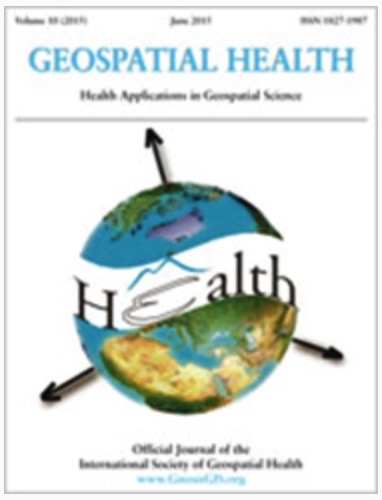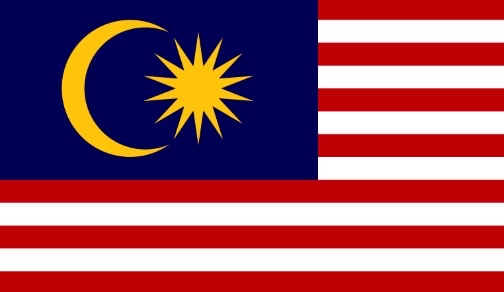Quantifying human-environment interactions using videography in the context of infectious disease transmission

Published: 8 May 2018
Abstract Views: 2056
PDF: 839
Video: 0
HTML: 88
Video: 0
HTML: 88
Publisher's note
All claims expressed in this article are solely those of the authors and do not necessarily represent those of their affiliated organizations, or those of the publisher, the editors and the reviewers. Any product that may be evaluated in this article or claim that may be made by its manufacturer is not guaranteed or endorsed by the publisher.
All claims expressed in this article are solely those of the authors and do not necessarily represent those of their affiliated organizations, or those of the publisher, the editors and the reviewers. Any product that may be evaluated in this article or claim that may be made by its manufacturer is not guaranteed or endorsed by the publisher.
Similar Articles
- Weerapong Thanapongtharm, Thomas P. Van Boeckel, Chandrashekhar Biradar, Xiangming Xiao, Marius Gilbert, Rivers and flooded areas identified by medium-resolution remote sensing improve risk prediction of the highly pathogenic avian influenza H5N1 in Thailand , Geospatial Health: Vol. 8 No. 1 (2013)
- Kun Yang, Le-Ping Sun, You-Sheng Liang, Feng Wu, Wei Li, Jian-Feng Zhang, Yi-Xin Huang, De-Rong Hang, Song Liang, Robert Bergquist, Xiao-Nong Zhou, Schistosoma japonicum risk in Jiangsu province, People's Republic of China: identification of a spatio-temporal risk pattern along the Yangtze River , Geospatial Health: Vol. 8 No. 1 (2013)
- Yi-Chen Wang, Chen-Chieh Feng, Paiboon Sithithaworn, Environmental determinants of Opisthorchis viverrini prevalence in northeast Thailand , Geospatial Health: Vol. 8 No. 1 (2013)
- Dara D. Mendez, Jessica Duell, Sarah Reiser, Deborah Martin, Robert Gradeck, Anthony Fabio, A methodology for combining multiple commercial data sources to improve measurement of the food and alcohol environment: applications of geographical information systems , Geospatial Health: Vol. 9 No. 1 (2014)
- Mohammadreza Rajabi, Ali Mansourian, Petter Pilesjö, Ahad Bazmani, Environmental modelling of visceral leishmaniasis by susceptibility-mapping using neural networks: a case study in north-western Iran , Geospatial Health: Vol. 9 No. 1 (2014)
- Samuel Fuhrimann, Mirko S. Winkler, Pierre H.H. Schneeberger, Charles B. Niwagaba, Joseph Buwule, Mohammed Babu, Kate Medlicott, Jürg Utzinger, Guéladio Cissé, Health risk assessment along the wastewater and faecal sludge management and reuse chain of Kampala, Uganda: a visualization , Geospatial Health: Vol. 9 No. 1 (2014)
- Ahmed Seid, Endalamaw Gadisa, Teshome Tsegaw, Adugna Abera, Aklilu Teshome, Abate Mulugeta, Merce Herrero, Daniel Argaw, Alvar Jorge, Asnakew Kebede, Abraham Aseffa, Risk map for cutaneous leishmaniasis in Ethiopia based on environmental factors as revealed by geographical information systems and statistics , Geospatial Health: Vol. 8 No. 2 (2014)
- Cristina Ballart, Irene Guerrero, Xavier Castells, Sergio Baròn, Soledad Castillejo, M. Magdalena Alcover, Montserrat Portús, Montserrat Gállego, Importance of individual analysis of environmental and climatic factors affecting the density of Leishmania vectors living in the same geographical area: the example of Phlebotomus ariasi and P. perniciosus in northeast Spain , Geospatial Health: Vol. 8 No. 2 (2014)
- Beatriz Martínez-Lòpez, Tsviatko Alexandrov, Lina Mur, Fernando Sánchez-Vizcaíno, José M. Sánchez-Vizcaíno, Evaluation of the spatial patterns and risk factors, including backyard pigs, for classical swine fever occurrence in Bulgaria using a Bayesian model , Geospatial Health: Vol. 8 No. 2 (2014)
- Rubén Solano, Diana Gòmez-Barroso, Fernando Simòn, Sarah Lafuente, Pere Simòn, Cristina Rius, Pilar Gorrindo, Diana Toledo, Joan A. Caylá, Retrospective space-time cluster analysis of whooping cough re-emergence in Barcelona, Spain, 2000-2011 , Geospatial Health: Vol. 8 No. 2 (2014)
You may also start an advanced similarity search for this article.











